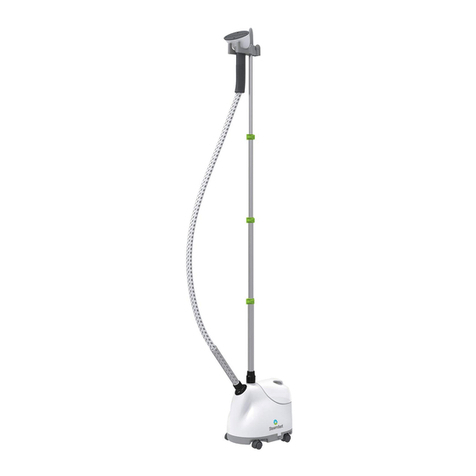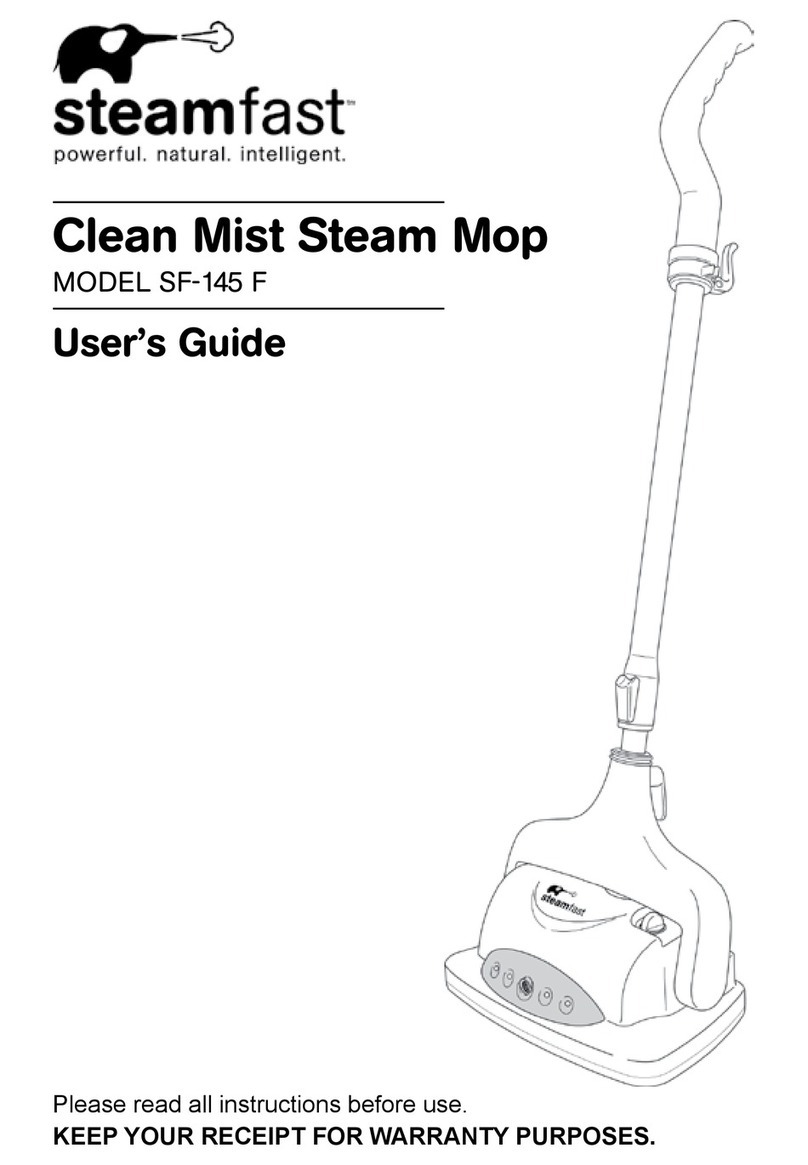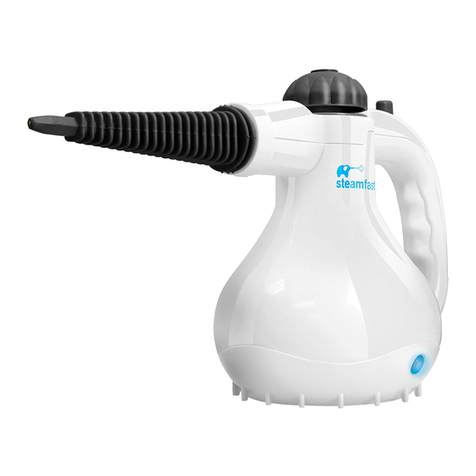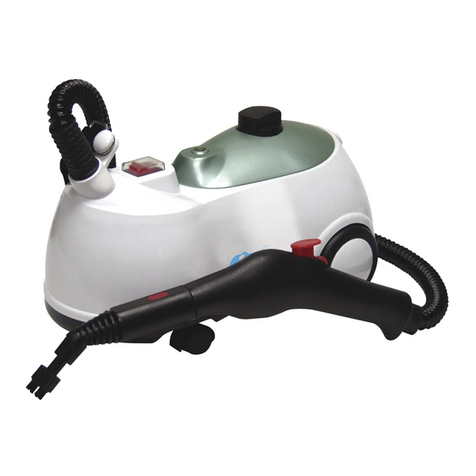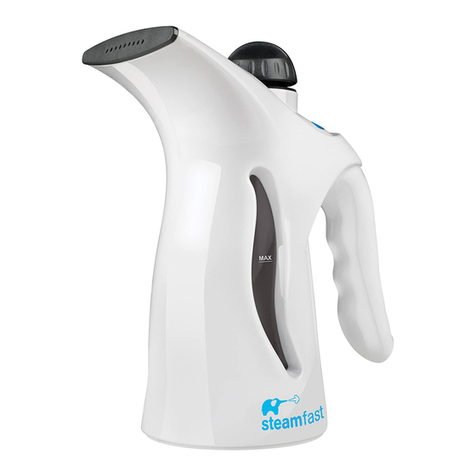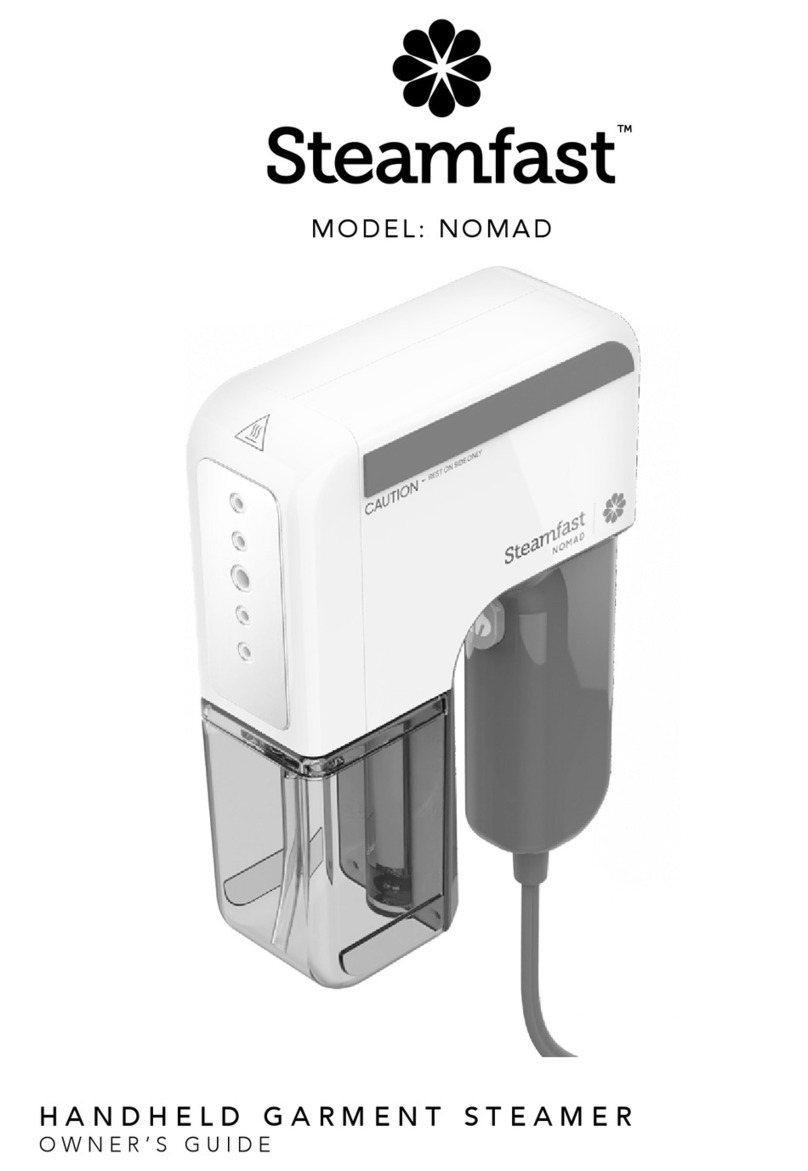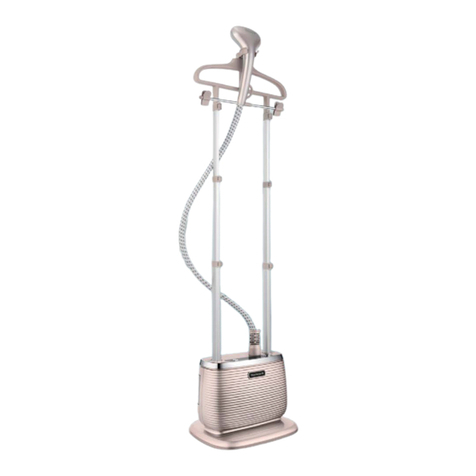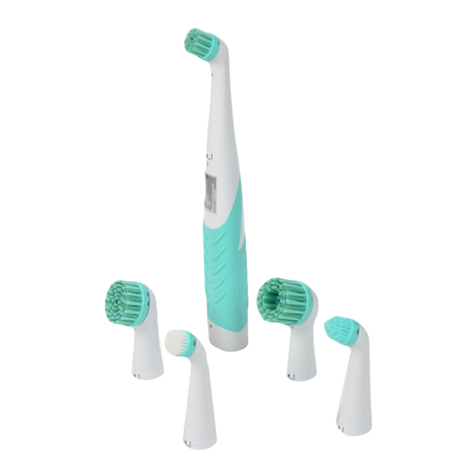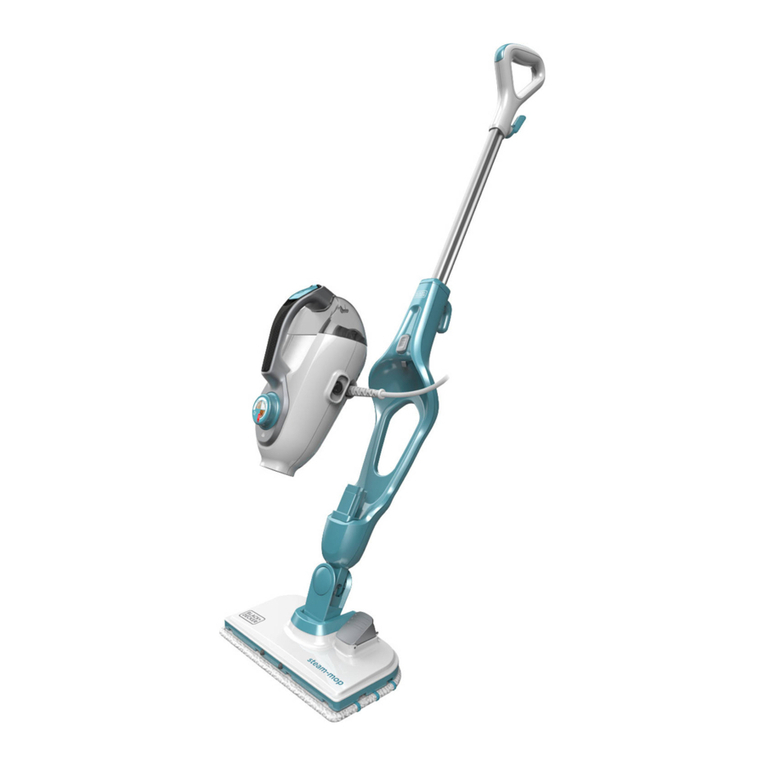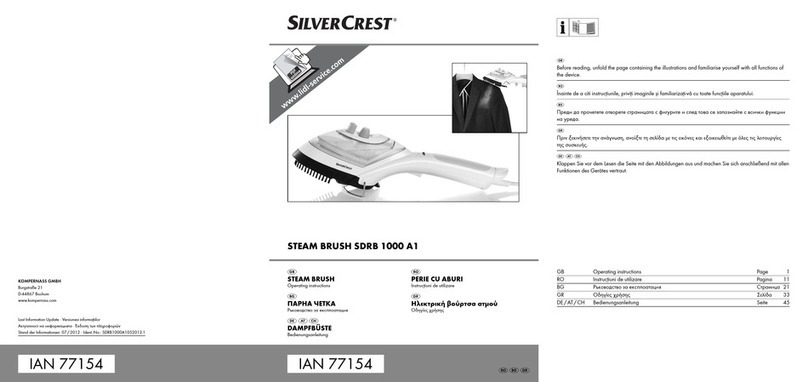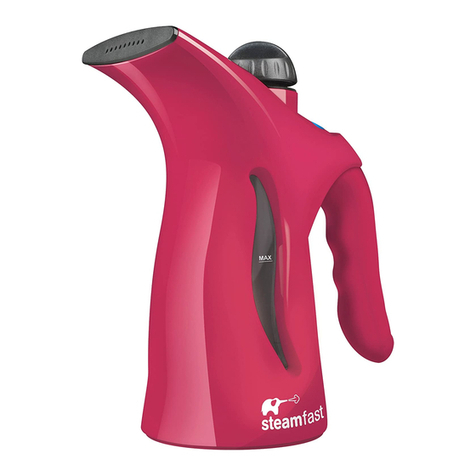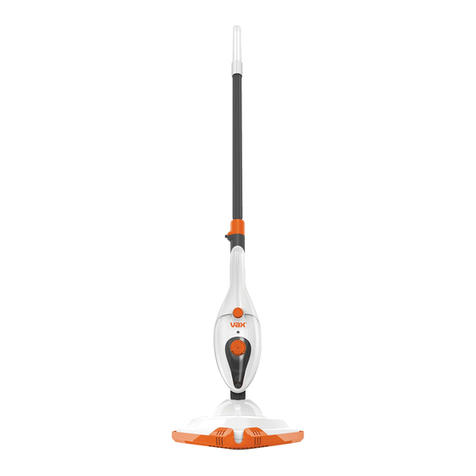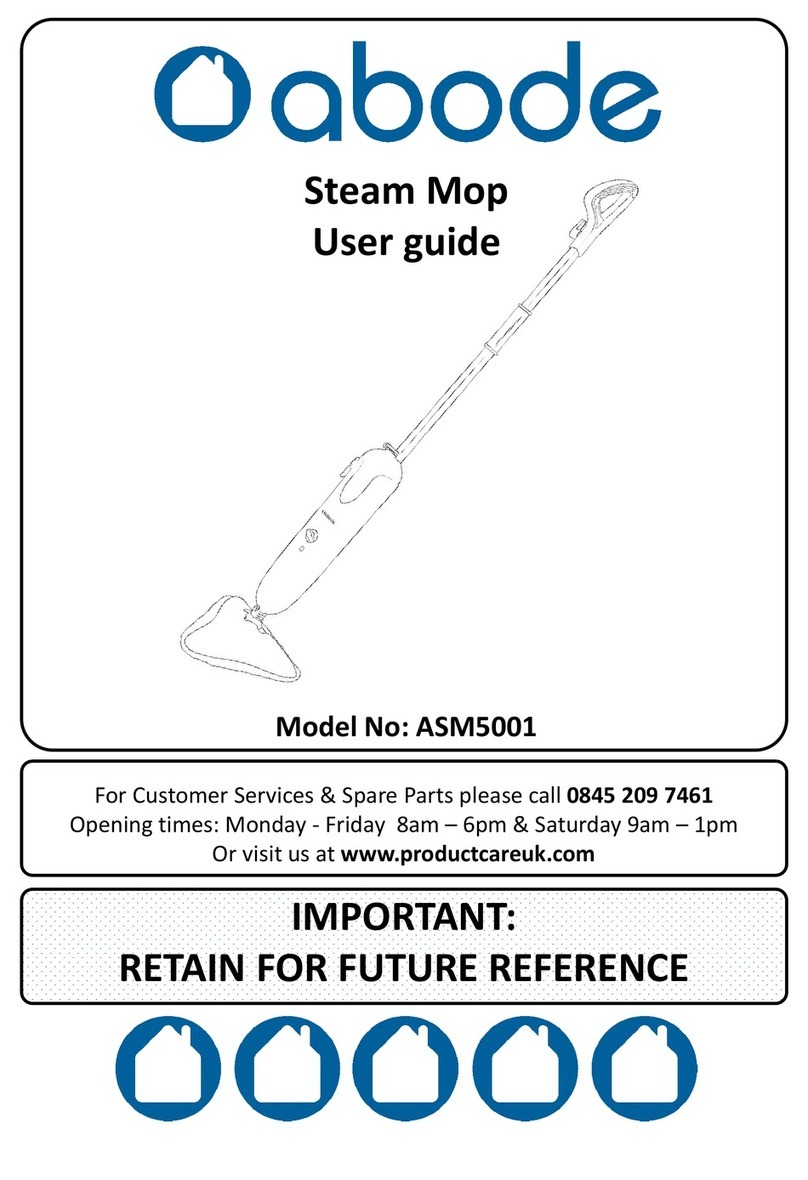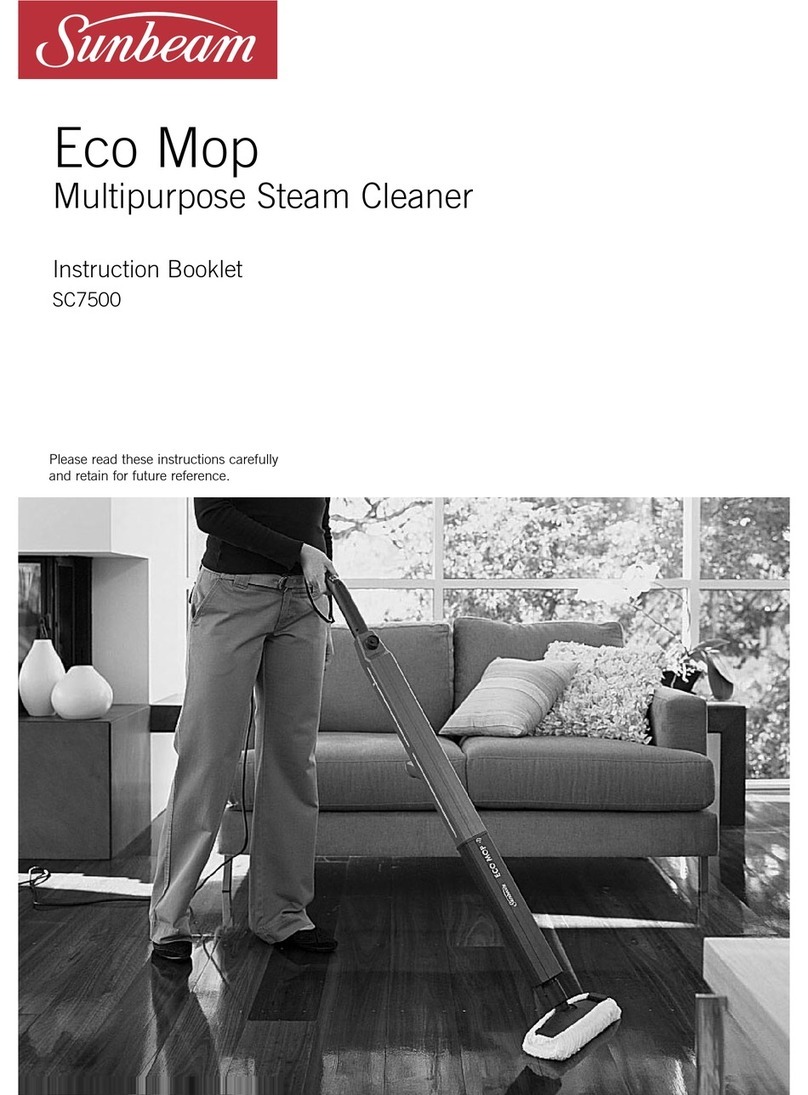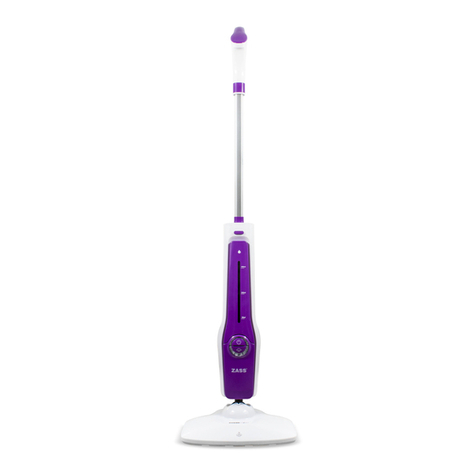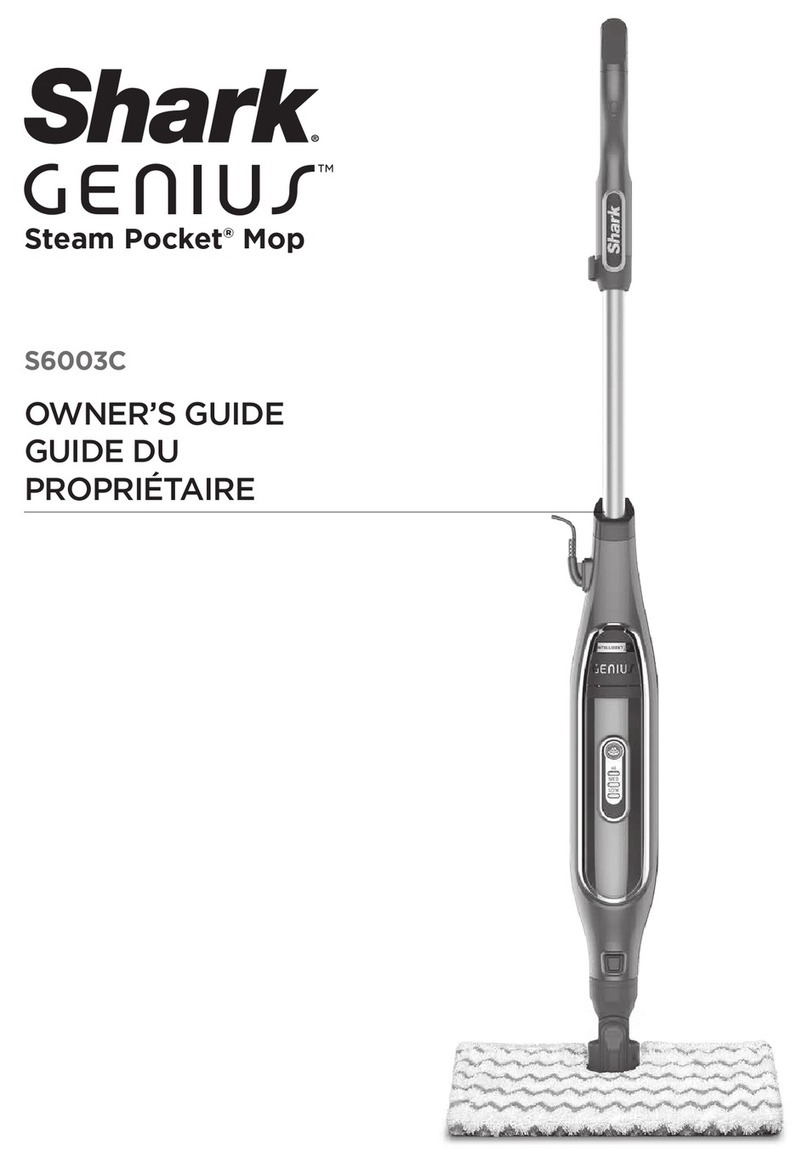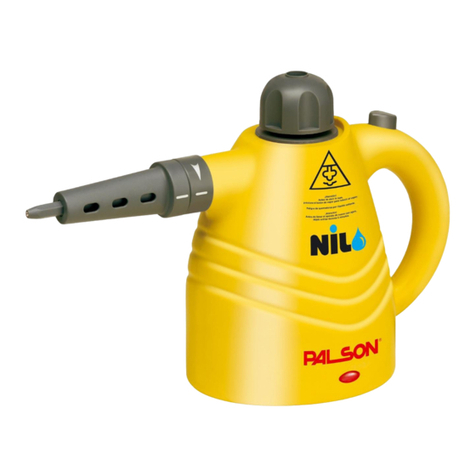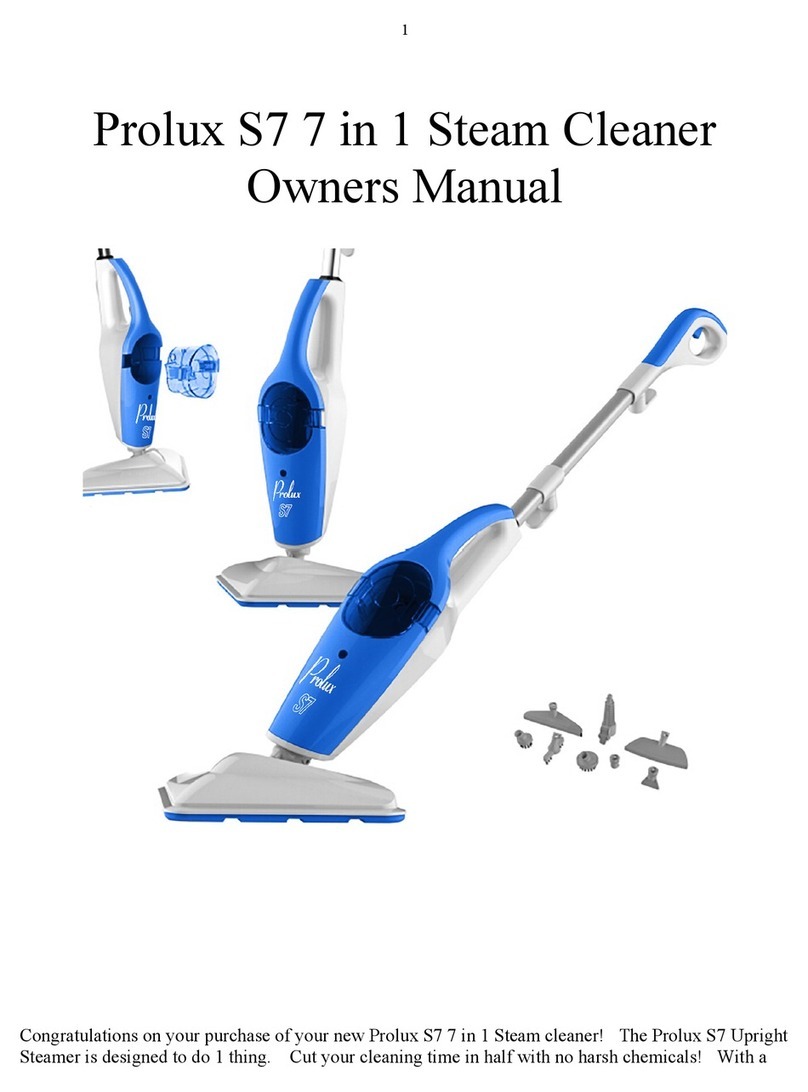
12 |ENGLISH
Using Your
3-in-1 Steam Mop
FABRIC STEAMING
CAUTION: When steaming any material for the rst time, it is recommended that you test on a small
inconspicuous area before proceeding. Do not use on synthetic fabrics, velvet, or other steam-
sensitive materials.
NOTE: The lowest setting on the Steam Control Dial is recommended to minimize water spotting.
•Make sure Fabric Nozzle is properly connected. Refer to Page 9 for details.
•For general steaming convenience, Extension Pole should be removed so that unit functions as a handheld
fabric steamer. However, Pole may be attached for steaming hard-to-reach spots, such as high curtains. BE
CAREFUL TO SUPPORT POLE WITH TWO HANDS WHEN LIFTING.
•Follow General operating instructions on Page 11 to begin steaming. For best results, set unit within
“FABRIC” range as indicated on Steam Control Dial.
•For fabrics and linens, direct Fabric Nozzle towards material you wish to steam, and keep the ow of steam
focused there. Using a slight back-and-forth motion over the area you are steaming will further enhance the
steaming process.
•For garments:
- Hang garment from a clean, rust-free hanger.
- Direct Fabric Nozzle towards bottom of garment. Steam will rise along inside and outside of material,
removing wrinkles. Slowly slide Fabric Nozzle upward from bottom to top of garment.
- Direct Fabric Nozzle away from garment and smooth material with your free hand.
- Repeat as necessary until garment is fresh and wrinkle-free.
•General steaming tips:
- Curtains and draperies can be steamed while still hanging.
- To remove wrinkles from towels, handkerchiefs and napkins, drape them over a rod or towel rack and
gently steam them.
- Heavier fabrics may require repeated steaming to achieve desired results.
- To remove exceptionally stubborn wrinkles, steam both sides of fabric.
- Be especially careful when steaming any delicate fabrics that may be damaged by water spotting.
STEAM CLEANING
CAUTION: When steaming any surface for the rst time, it is recommended that you test on a small
inconspicuous area before proceeding. Do not use on leather, wax, polished furniture and oors,
or other delicate, steam-sensitive surfaces.
•Make sure desired cleaning accessories (Jet Nozzle / Utility Brush / Fabric Nozzle with Squeegee) are
properly connected. Refer to Pages 8 & 9 for details.
•For general cleaning convenience, Extension Pole should be removed so that unit functions as a handheld
steam cleaner. However, Pole may be attached for cleaning hard-to-reach spots, such as oor grout or
ceilings. BE CAREFUL TO SUPPORT POLE WITH TWO HANDS WHEN LIFTING.
•Follow General operating instructions on Page 11 to begin steaming. For best results, set unit within
“HANDHELD CLEANER” range as indicated on Steam Control Dial.
•Direct Jet Nozzle towards surface you wish to steam. Use a slight back-and-forth motion over area to
enhance the cleaning process. To sanitize surfaces, set Steam Control Dial to “HIGH” and hold Jet Nozzle
approximately 1/2 inch from surface for at least 5 seconds. This will most effectively kill germs and bacteria.
•When using Squeegee, start by thoroughly steaming entire window or mirror, then turn steam off. Next,
press Squeegee to top of window or mirror, and pull slowly downward. Move slowly from one side of the
surface to the other in this fashion until entire surface is clean.
•Wipe steamed areas with a clean cloth to remove loosened dirt and grime. Wiping the area while it is still
wet is recommended, but use caution when wiping surfaces such as metal that may still be hot.
ESPAÑOL |49
OPERACIÓN GENERAL
NOTA: Asegúrese que el tanque de agua esté lleno y los
accesorios estén conectados antes de seguir estos pasos.
1. Para el primer uso, retire la cubierta plástica sobre el enchufe.
Conéctelo a una toma de corriente adecuada.
2. Gire el Control de Vapor en el sentido de las manecillas del
reloj de “OFF” a la posición deseada (FIGURA 9). La Luz
Indicadora de Potencia se encenderá inmediatamente para
indicar que la unidad está encendida y calentando.
NOTA: Las posiciones de intensidad de vapor están
clasicadas según la potencia (“LOW” [bajo] y “HIGH” [alto])
y la función (“MOP/FABRIC” [trapeador/tela] y “HANDHELD
CLEANER” [limpiador manual]). Ver página 51 para más
información sobre cómo seleccionar la posición del Control.
3. Aproximadamente 30 segundos después, usted escuchará un
zumbido cuando la unidad empiece a despedir vapor.
4. Oriente la Boquilla de Vapor (con cualquier accesorio conectado)
hacia la supercie que desea vaporizar. Ver la sección siguiente
Trapear con Vapor y las secciones de Vaporización de Telas
y Limpieza con Vapor en la página 50 para más detalles.
ATENCIÓN: Siempre asegúrese de que la Boquilla de Vapor
y los accesorios estén orientados en forma segura (lejos de
usted, otras personas, mascotas y plantas) cuando emita
vapor.
TRAPEAR CON VAPOR
NOTA: Se recomienda barrer o aspirar los suelos antes de trapear.
• Asegúrese de que el Tubo de Extensión, el Cabezal del Trapeador y el Cojín de Microbra estén debidamente
conectados. Ver páginas 44 y 45 para más detalles.
• Siga las instrucciones de Operación General para empezar a vaporizar. Para mejores resultados, ponga la unidad
en “MOP/FABRIC” como se india en el Control de Vapor.
NOTA: Se recomienda usar sólo la posición “LOW” para suelos de madera.
• Trapee el piso rmemente hacia delante y hacia atrás y siempre camine hacia atrás para evitar pisar el área recién
trapeada.
NOTA: Para evitar pandear o dañar la supercie por el calor y la humedad, no use la unidad sobre madera
no sellada o cerámica no recubierta. El vapor puede quitar el brillo de algunos suelos que hayan sido
encerados.
• El Cojín de Microbra absorberá la humedad durante el trapeado. Sin embargo, dependiendo de la supercie y de la
intensidad del vapor, puede quedar alguna humedad residual. En este caso, se recomienda permitir el secado
naturalmente. Puede orientarse un ventilador hacia el área trapeada para mejorar el secado.
• Por el gran tamaño del Cabezal del Trapeador, puede dicultarse la limpieza total de ciertos suelos (como baldosas)
que tengan grietas o lechado. Para una mejor limpieza del lechado, use el Trapeador a Vapor 3-en-1 en modo de
limpieza con vapor. Ver la sección de Limpieza con Vapor en la página 50 para más detalles.
FIGURA 9





















